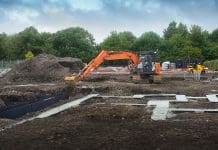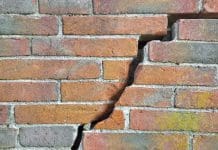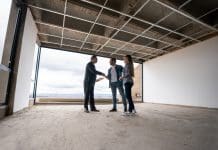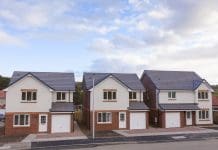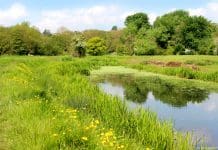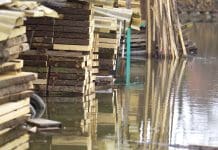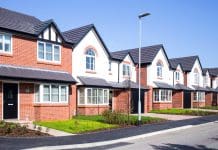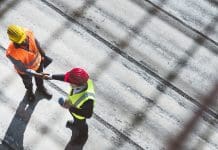Urban trees are often blamed for subsidence claims and issues – but before reaching for the chainsaw, consider the many benefits they offer to our buildings and wellbeing, says Andrew D Thompson of Anglia Ruskin University
Do you have a large mature tree in or near to your home, have you noticed any cracking in your property? Move the curtains and have a look at the corners of windows and doors. Are you spotting any diagonal raking cracks?
Early signs will be fine hairline fractures, sticking doors/windows, and rumples in the wallpaper.
The dominance of clay as the subsoil below most of London and the South East of England combined with elevated temperature plus little rainfall has chartered building surveyors dusting off their skills for dealing with domestic subsidence claims.
But here is when the fun starts. On days of high rainfall, if that rain meets a defective drainage system, it can lead to swelling and washing away of the fine soil, so come rain or shine, subsidence is a fact!
The typical homeowner’s most valuable asset will be cracking physically before their eyes. This is the moment that fear and anxiety over the future hits a homeowner and, for a few, with fear comes irrational thought.
Trees are often blamed for problems with building foundations
The owner will be faced by an investigation team, who will take soil samples and discover roots at the building foundations. London is 21% trees, so technically an urban forest, if only just as the threshold is 20%, so really is this a surprise to anyone digging an investigation hole looking for tree roots.
The investigation team will point to the nearest tree as the source of all that is going wrong with your building.
This finger-pointing totally omits the impact of climate change, building design foundation depth and a host of other inconvenient matters that have equal merit in a truly holistic assessment of the reason the homeowner’s property is cracking.
The result is tree hate!
Building surveyors and insurance companies can repair and reinstate challenging subsidence cases
Before you go running for your chainsaw and commence felling every tree in sight, please take a deep breath and a moment to reflect on these unsung heroes of the urban environment.
Your local tree is your friend and is giving a range of benefits to both you and wider society that far outweigh the inconvenience of any domestic subsidence cracking.
Your friendly chartered building surveyor, working with your insurance company, can repair and reinstate even the most challenging of subsidence cases; it is a technical issue but it is not a disaster, so let us keep everything in perspective.
That beautiful street that you live in is magnified by the glory that is a tree.
The tree adds value to your property as people like living in green environments rather than harsh urban settings, we know this because in our past, estate designs have been built treeless and were hated by occupiers and the wider public.
People, when rational, love trees and the green environment.
Trees offer many benefits to homeowners
The tree is a wonder of nature, it provides shade to your home in summer helping with cooling both to your building and the wider microclimate.
In 2022, the UK Building Regulations were updated to allow for the risk of overheating in residential buildings.
Shade in design and as a benefit to properties is now important and an informed future purchaser of your property will be seeking a home surrounded by trees.
If you think it was hot in summer already then remove the local trees and feel the overheating rise.
As warm summers are our new regular reality, the planting of more urban trees is being encouraged, so this balance of learning to have trees and building in harmony is something everyone needs to understand better.
Trees have natural passive solar design (PSD)
It is a technical fact that a tree-overshadowed property is cooler in summer, saving on energy load from fans and air conditioning with no negative impact in winter during the traditional heating season when shaded by a tree, as the trees naturally drop their leaves, allowing for passive solar design (PSD).
So, in a time of energy crisis and affordability to pay cooling and heating costs, the humble tree is doing its job in summer and winter saving you money.
Trees and buildings can therefore co-exist with good design and sensible layout. Cracking can happen but with tree management, under- and over-pinning repair a property can be made to be in balance, even if historic poor design is triggering current day movement and cracking.
Trees also assist in microclimate design improving air quality, flood prevention and general amenity. So, blame global warming, hate the pollution of our industrial past but spare a moment to appreciate and love your local trees.
While trees do contribute in subsidence cases, it is vital to also remember the benefits, which in holistic terms typically outweigh the rationale to fell. So, leave the worry of getting the cracking fixed to your chartered building surveyor and enjoy again the wonder of the urban tree!
Andrew D Thompson CEnv FRICS
Associate lecturer
Department of Built Environment
Anglia Ruskin University
Tel: +44 (0)1245 493131





